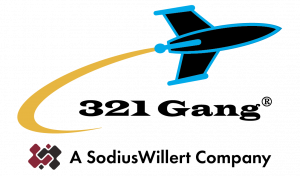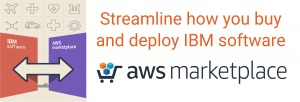Why Spreadsheets, Word Docs, and Lightweight Tools Fall Short for Safety-Critical Engineering

When Dorothy and her companions wandered through the forest in The Wizard of Oz, they feared the unknown dangers lurking behind every tree: “Lions and tigers and bears, oh my!”
In the world of safety and mission-critical projects — aerospace, automotive, medical devices, defense — the dangers aren’t in the forest. They’re in the tools we use to capture, manage, and validate requirements.
On the surface, spreadsheets, word processors, or even collaborative wikis like Confluence or Jira may seem “good enough.” But hidden inside are risks that can undermine compliance, delay schedules, inflate costs, and ultimately put safety at risk.
Let’s explore these hidden predators.
The Lion: Missed Requirements
Spreadsheets and documents scatter requirements across multiple files, folders, or teams. A missed email, an out-of-date version, or a forgotten attachment can cause critical requirements to slip through the cracks.
- Danger: An untracked requirement in a medical device could mean a patient safety feature is overlooked.
- Impact: Late discovery leads to expensive redesigns, test failures, or — in the worst case — regulatory rejection.
Like a lion stalking silently, missed requirements often aren’t noticed until it’s too late.
The Tiger: Added Rework
In disconnected tools, traceability is manual. Teams copy-paste requirements into Confluence or Jira, engineers interpret them differently in spreadsheets, and testers create parallel documents. Without live links, changes ripple chaotically.
- Danger: A change to a braking system requirement in automotive engineering doesn’t flow down to system tests.
- Impact: Engineering discovers the misalignment months later — requiring costly rework, retesting, and certification delays.
This tiger pounces when you least expect it, devouring time and budget.
The Bear: Poor Quality & Compliance Risk
Regulators and auditors demand proof of end-to-end traceability: from stakeholder needs → system requirements → design artifacts → verification and validation. Word docs and spreadsheets make this traceability a manual patchwork quilt — fragile and error-prone.
- Danger: A defense program can’t demonstrate compliance with DO-178C or ISO 26262 because links are inconsistent or missing.
- Impact: Failed audits, penalties, or program shutdowns.
This bear is the most dangerous of all: it sits on your project, crushing credibility and trust.
Why Lightweight Tools Aren’t Enough
Tools like Excel, Word, Jira or Confluence aren’t immune. While they improve collaboration, they still lack:
- Robust configuration management for variants and baselines.
- Deep integrations across the engineering lifecycle (MBSE, DevOps, testing).
- Compliance-ready reporting and audit trails demanded in safety-critical industries.
These gaps turn small inefficiencies into systemic risks — risks that regulated industries simply cannot afford.
The Yellow Brick Road: Toward Robust Lifecycle Management
Instead of wandering through a forest of disconnected documents and partial solutions, organizations need a clearer path forward: a robust, integrated lifecycle management approach.
Modern tools like IBM DOORS Next, Siemens Polarion, and Jama Connect all aim to address the same fundamental challenge: enabling end-to-end visibility, change control, and traceability across increasingly complex systems.
The key is not which logo sits on the software, but whether the platform you choose can deliver on three essentials:
- Traceability at scale — linking requirements, designs, risks, and tests in a way that survives audits and certification.
- Collaboration across disciplines — so systems engineers, developers, testers, and compliance teams are all working from the same source of truth.
- Built-in compliance readiness — with baselining, versioning, and reporting that regulators can trust.
Whether you evaluate DOORS Next, Polarion, or Jama, the message is clear: for safety- and mission-critical programs, simple spreadsheets, wikis, and lightweight tools aren’t enough. The road to success is paved with disciplined lifecycle management.
Conclusion: Don’t Let the Forest Win
Safety- and mission-critical projects can’t gamble with scattered spreadsheets, siloed word docs, or lightweight tools. The stakes are too high.
Without robust lifecycle management, you risk:
- Lions (missed requirements)
- Tigers (costly rework)
- Bears (poor quality & compliance failures)
Oh my!
It’s time to step onto the Yellow Brick Road — toward smarter engineering.
321 Gang are requirements experts, and we can help you find the right path. Learn more HERE and HERE!

321 Gang | 14362 North FLW | Suite 1000 | Scottsdale, AZ 85260 | 877.820.0888

